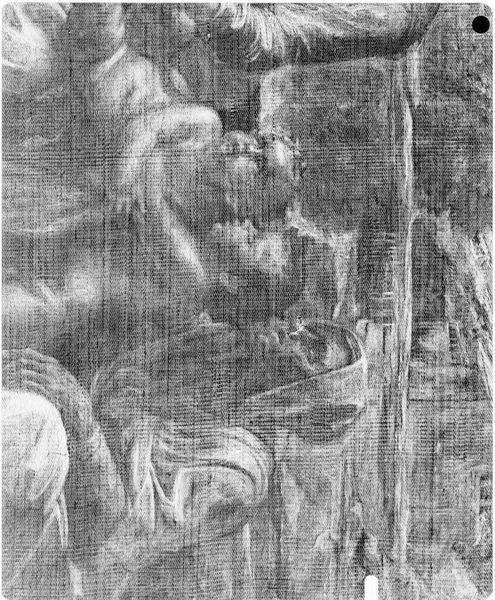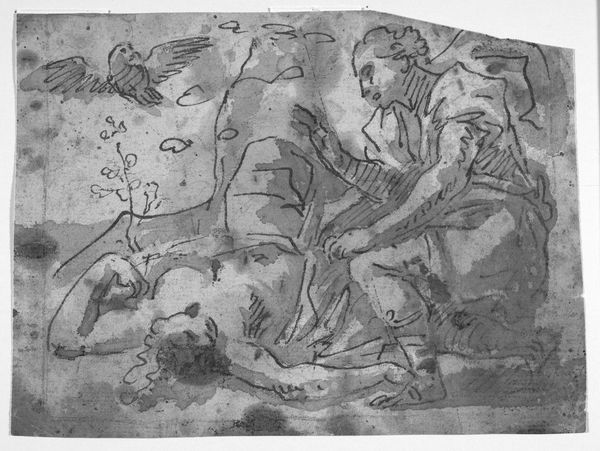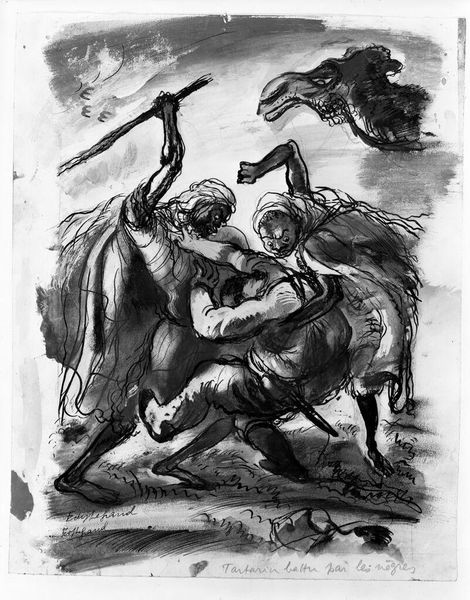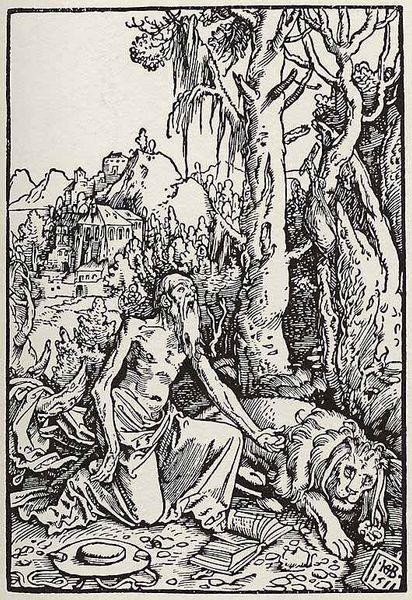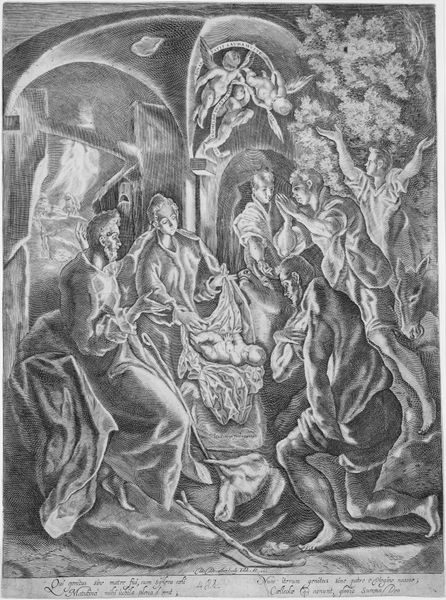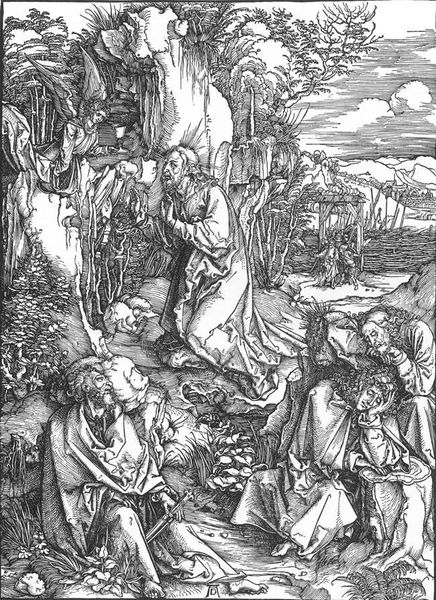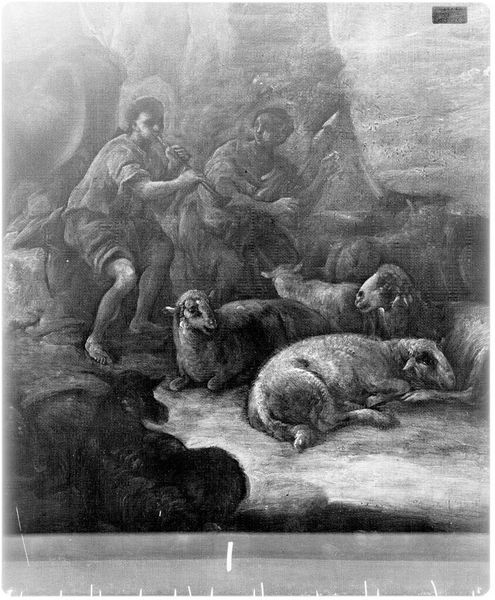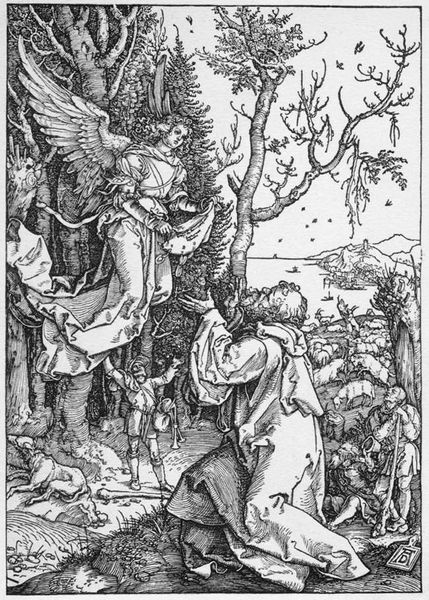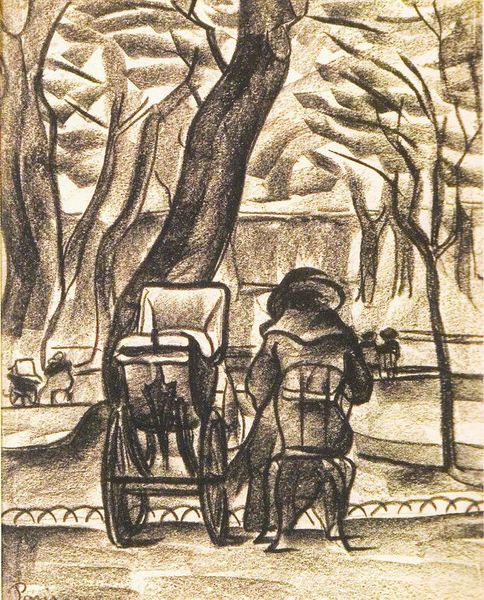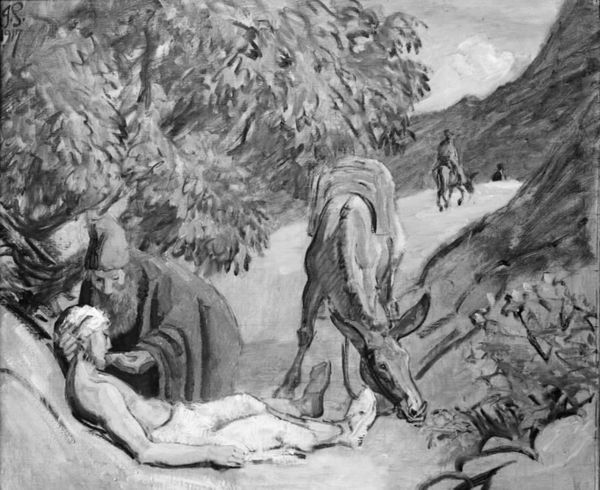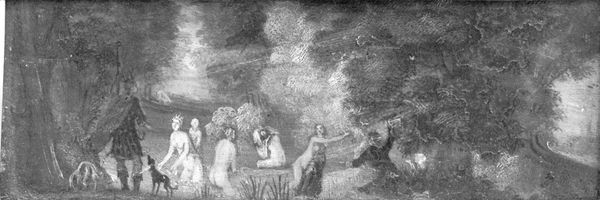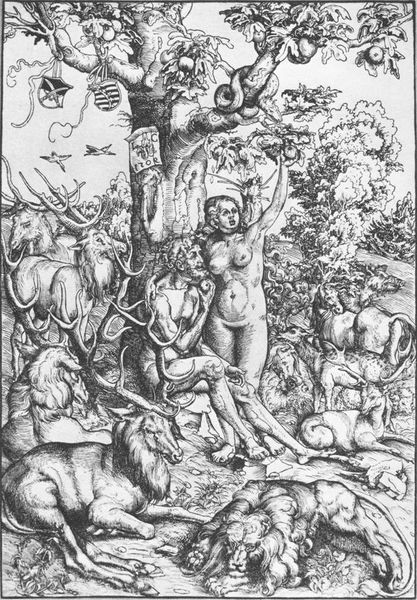
tempera, painting, canvas
#
narrative-art
#
tempera
#
painting
#
landscape
#
charcoal drawing
#
figuration
#
charcoal art
#
canvas
#
portrait reference
#
expressionism
#
genre-painting
Dimensions: 65 cm (height) x 48.5 cm (width) (Netto)
Editor: Take a look at "Peasant Cutting Back a Tree in Bloom" from 1911 to 1915 by Henri Doucet. It looks like a tempera painting on canvas. There's such an intensity in the way the peasants are captured, their labor seems almost monumental. How do you interpret this work? Curator: For me, it's fascinating to consider this work through a materialist lens. Think about the peasant’s labor, clearly depicted, and the very means by which Doucet made this piece. How do the materials -- the tempera, the canvas -- affect our understanding of the peasant's social context? Editor: I hadn't considered the impact of the materials on our interpretation of their social standing. So, the choice of tempera and canvas isn't just aesthetic; it's loaded? Curator: Absolutely. Tempera, often associated with earlier, perhaps less 'sophisticated' art forms, combined with canvas usually meant for high art. Is Doucet blurring those lines? Is he elevating the status of the peasant’s work through a fine art medium like painting? What's the significance of capturing everyday labor like pruning, usually undervalued? Editor: So, it's about challenging the traditional boundaries between high art and craft by bringing labor, quite literally, into the picture. Also, is there commentary on the consumption aspect tied to agriculture or natural resources? Curator: Precisely! The cutting back of the tree, the yield it produces, reflects both consumption and control over natural resources. Considering the date, the early 20th century, how do industrialization and burgeoning consumerism impact our reading of these rural laborers? Editor: It’s so interesting to think about. This reframes the work; it’s not just a scene, it's about production and societal value. Thanks for your insights. Curator: Indeed. Reflecting on the labor of the artist himself through the materials he handled is an eye-opening experience.
Comments
No comments
Be the first to comment and join the conversation on the ultimate creative platform.

